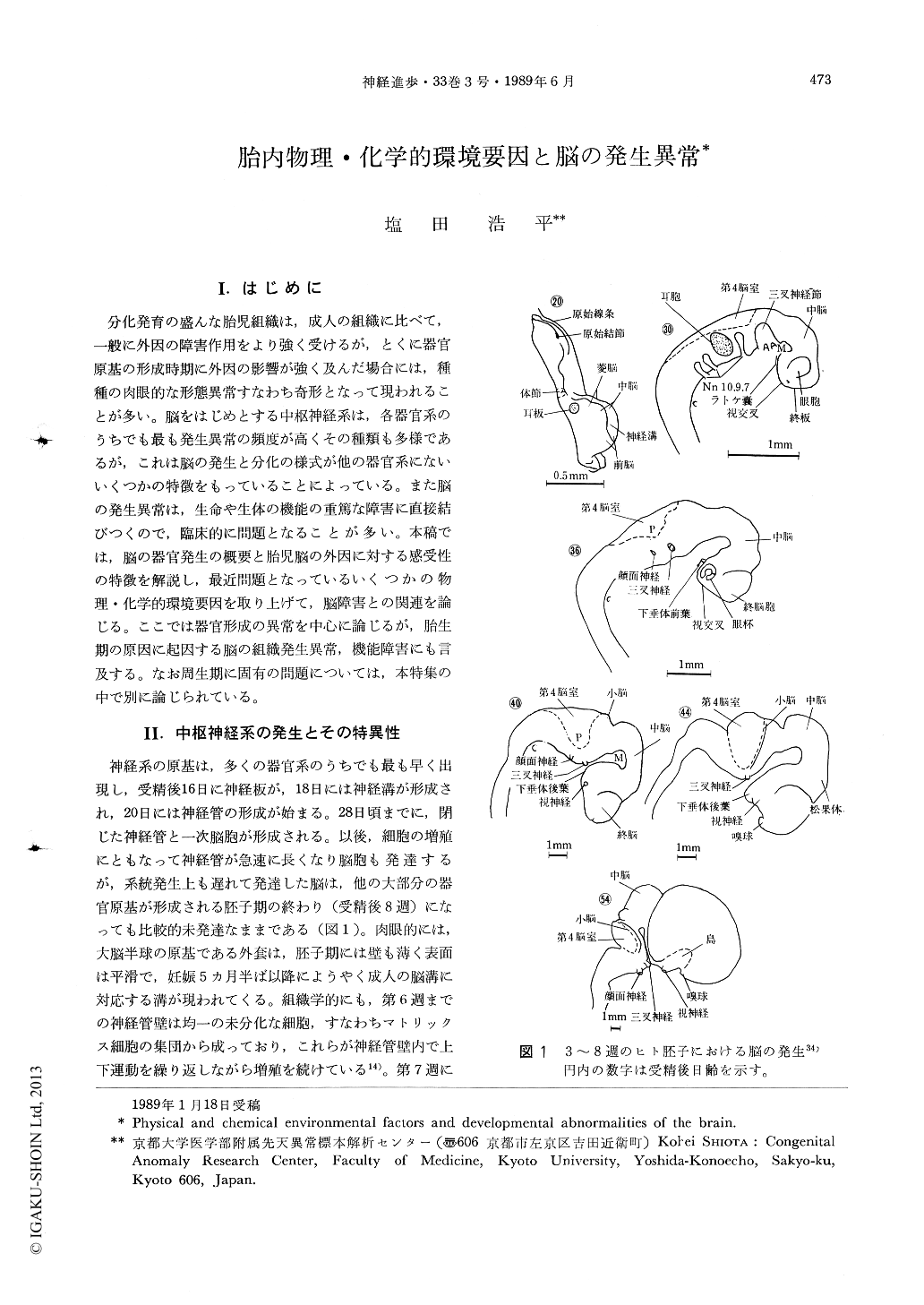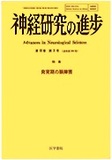Japanese
English
- 有料閲覧
- Abstract 文献概要
- 1ページ目 Look Inside
I.はじめに
分化発育の盛んな胎児組織は,成人の組織に比べて,一般に外因の障害作用をより強く受けるが,とくに器官原基の形成時期に外因の影響が強く及んだ場合には,種種の肉眼的な形態異常すなわち奇形となって現われることが多い。脳をはじめとする中枢神経系は,各器官系のうちでも最も発生異常の頻度が高くその種類も多様であるが,これは脳の発生と分化の様式が他の器官系にないいくつかの特徴をもっていることによっている。また脳の発生異常は,生命や生体の機能の重篤な障害に直接結びつくので,臨床的に問題となることが多い。本稿では,脳の器官発生の概要と胎児脳の外因に対する感受性の特徴を解説し,最近問題となっているいくつかの物理・化学的環境要因を取り上げて,脳障害との関連を論じる。ここでは器官形成の異常を中心に論じるが,胎生期の原因に起因する脳の組織発生異常,機能障害にも言及する。なお周生期に固有の問題については,本特集の中で別に論じられている。
The developing brain is highly vulnerable to exogenous teratogenic agents during a relatively long period of intrauterine life. Although the onset of brain development is one of the earliest develop-mental events, the human brain remains premature even at birth. Teratogenic insults may cause irreversible changes in the embryonic and fetal brain and result in various malformations and/or per-manent functional impairment. Major malformations are generally induced during the first 8 weeks of intrauterine life, but the critical period of histogenetic abnormalities is much longer and lasts until the perinatal period.

Copyright © 1989, Igaku-Shoin Ltd. All rights reserved.


